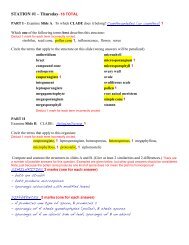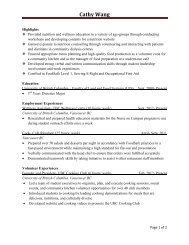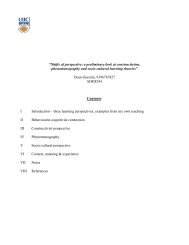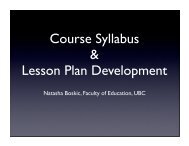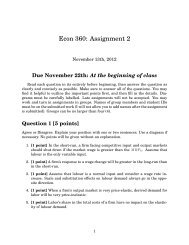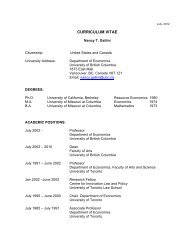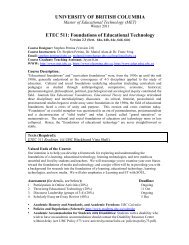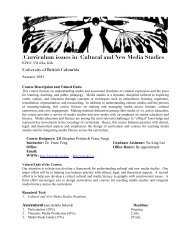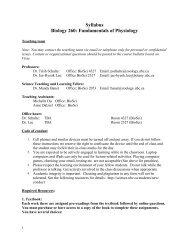introduction au 17e : les règles du jeu boileau et ... - UBC Blogs
introduction au 17e : les règles du jeu boileau et ... - UBC Blogs
introduction au 17e : les règles du jeu boileau et ... - UBC Blogs
Create successful ePaper yourself
Turn your PDF publications into a flip-book with our unique Google optimized e-Paper software.
absolutely ev<strong>et</strong>ything – the sum total of human knowledge and has a conception of hisworks as an interconnected whole thing (from how a plant is put tog<strong>et</strong>her, to themovements of the plan<strong>et</strong>s; via human <strong>et</strong>hics, politics, sociology, psychology, dreams,myth, history, why animals don’t l<strong>au</strong>gh but humans do; through to logic and maths; andso on…). What’s worth noting is an overlap – and there are many overlaps andintersections in Aristotle b<strong>et</strong>ween the Po<strong>et</strong>ics, the Rh<strong>et</strong>oric, and those parts of the Politicsand Ethics to do with public speaking and persuasion.Bearing in mind Boile<strong>au</strong>’s warnings against wily flatterers; and we’ll r<strong>et</strong>urn to this withLa Princesse de Clèves, the ro<strong>les</strong> of the narrator and the reader, and se<strong>du</strong>ction proper.Ch 23-24: Epic po<strong>et</strong>ryCh 25: Critical objections and their answersThis joins up with the points made in 15 on character: on different standards of truth inpo<strong>et</strong>ry, as disctinct from fact, history, politics, <strong>et</strong>c.Ch 26: Epic and tragedy comparedTragedy wins, as it achieves its ends b<strong>et</strong>ter – mainly bec<strong>au</strong>se it has more tools, tricks, anddevices at its disposal. Compare, in the 21 st c., an epic poem and a film (or, b<strong>et</strong>ter still, amore leisurely TV serialization).NB This is a rough outline only: the full texts are available online (Perseus Project) andin book form. The main most recent English translations are the Jonathan Barnes/Oxfordone (indivi<strong>du</strong>al works + 2-volume compl<strong>et</strong>e works), or those published by Hack<strong>et</strong>t.There’s also a splendid (and readily-available and cheap) Penguin containing the po<strong>et</strong>icstreatises of Aristotle, Horace (1st c. BCE), and Longinus (a.k.a. pseudo-Longinus, oftennow supposed to be “anon”; approx. b<strong>et</strong>ween 3rd c. CE and 1 st c. BCE); called ClassicalLiterary Criticism (c. 150 p). Fundamental to French and other European po<strong>et</strong>ics andliterary criticism of the 17 th c., and later, and indeed of the 20 th and 21 st c.COMMON GROUND:AppropriatenessDifference b<strong>et</strong>ween the more usual sense of truth (= fact) and a relative, more elastic“po<strong>et</strong>ic truth” (that parallels vraisemblance)Reason, balance, and harmonyAristotle also happens to act as common ground in 17 th c. French e<strong>du</strong>cation: bridging theJesuit/Jansenist divide. A “classicism” of shared culture générale, much of which isClassical (antique).FOR THE TUTORIAL- We will be working on the Préface (and DISCUSSION BOARD topics)- And we will be commenting on vraisemblance and bienséance in The Key Se<strong>du</strong>ctionScene (II.5, Phèdre/Hippolyte).<strong>17e</strong> : Boile<strong>au</strong> : 9




